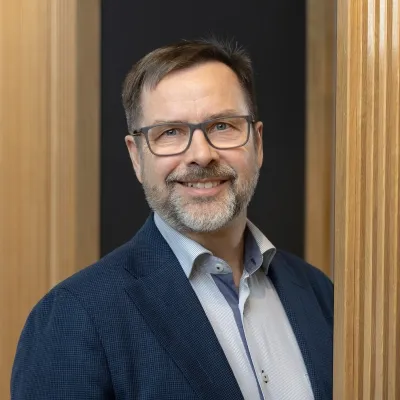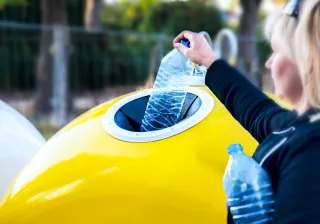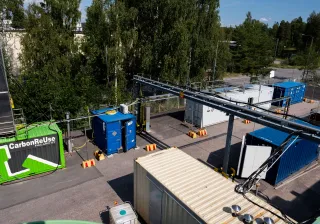It appears that the current recycling targets for plastic waste set out in the law are not being met. Finland has already received a warning about this from the European Commission. Should we be open-minded and explore new approaches?
Finland has received a warning from the European Commission that we are not meeting the targets set in the legislation on recycling packaging plastic waste. There is not enough recyclable plastic waste, there are emissions from the incineration of waste plastic, the capacities of sorting and recycling facilities are too low and the waste plastic collected from consumers cannot be recycled into plastic material equivalent to new.
The system is not working – so could a new approach be taken to the current collection, sorting and recycling of plastic waste?
The separate collection of plastic packaging waste from consumers has improved in recent years. Yet only around 30% of packaging plastics in the Helsinki Metropolitan Area are collected separately and around 20% are eventually recycled. When other plastics are taken into account in addition to packaging waste, up to six times more plastics are incinerated with mixed waste than the amount gathered in separately collected plastic waste. The reports make grim reading, even though the metropolitan area is ideal for separate collection in terms of population density. There are similar figures in Sweden where it has been found to be very costly to increase separate collection to an adequate level. In Finland, the lack of sorting and recycling capacity has led to plastic waste being exported to countries such as Sweden for sorting and recycling.
Separately collected plastic packaging waste from consumers, so-called 'source-sorted' plastic waste consists of many different types of plastic and multi-materials containing different plastics. This requires not only sorting in the kitchen, but also a well-functioning industrial sorting and washing process to turn the waste into recycled plastics with the currently used methods. Almost half of the plastic waste collected from consumers is ultimately not suitable for mechanical recycling and is mostly incinerated. Mechanical recycling does not produce recycled plastics of sufficient quality for many more demanding applications.
It appears that the current recycling targets set out in the law will not be met. And the situation will not get any easier as both the quantitative and qualitative requirements for recycled plastics will increase in the coming decades as a result of new regulation.
A more functional concept
Following closely both the regulatory and technological developments in plastics recycling, one cannot help but challenge the current system based on sorting at source, separate collection, industrial sorting and mechanical recycling.
Should we be open-minded and explore new approaches to collecting, sorting and recycling plastic waste?
A more viable concept could be one in which consumer plastic waste recycling is based on the industrial sorting of mixed waste and the main recycling route is so-called chemical recycling. The feedstock for mechanical recycling would come from relatively clean plastic waste fractions from industry, commerce, construction and agriculture. The quality of the products from mechanical recycling would improve and they would be suitable for many new applications, while chemical recycling would obtain sufficient quantities of good enough quality and affordable feedstock.
This would bring more plastic waste into profitable recycling and meet current and future sustainability and legislative targets. Carbon dioxide emissions from the incineration of plastic waste would be significantly reduced even if the non-recyclable fractions were still incinerated for energy.
Positive developments on the horizon
February's announcement of an investment in waste plastic sorting and mechanical recycling capacity in Hyvinkää was welcome news. Four operators in Finland are currently investing in the pyrolysis-based liquefaction of plastic waste. The Porvoo oil refinery is investing heavily in the further processing of liquefied plastics. Together, these will mean significant additional capacity for plastics recycling and the emergence of premium quality chemically recycled plastics on the market.
The obligations on the use of recycled plastics in coming EU regulations are positive for the creation of the market for recycled plastics. As regulations tighten and expand to more demanding applications, the quality of recycled plastics will become more important, contributing to the rise of chemical recycling alongside mechanical recycling.
Several research and innovation projects are under way and being planned in Finland to develop new solutions to improve plastics recycling. Business Finland's leading company (Veturi) ecosystems have created a great platform to move things forward, and the industry and value chain are genuinely investing to develop diverse solutions to the plastics challenge.






